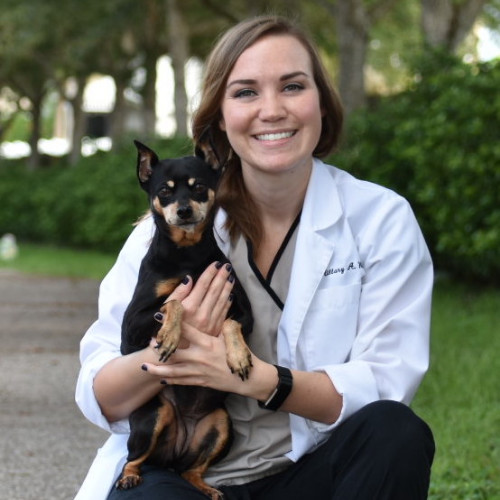With an uncanny ability to sniff out even the most concealed leftovers, our canine companions find their way to objects and materials they shouldn’t, like tin foil (also known as aluminum foil). The aftermath of a delicious home-cooked meal or barbeque often involves tin foil, used either for cooking or storing food. This common kitchen item may be innocent to us, but it poses a serious threat to our dogs if ingested. As such, dog owners must maintain caution and keep an eye on their dogs when around tin foil.

The Risks of Eating Tin Foil
Physical Dangers
When a dog ingests tin foil, the sharp edges and hard consistency pose a significant physical risk. As it moves through the gastrointestinal tract, the tin foil can cause lacerations or even perforations. These injuries can lead to internal bleeding, which might not be immediately apparent to pet owners. If these cuts are significant or multiple, they could lead to peritonitis, a severe bacterial infection of the abdomen that requires immediate medical attention.1
Moreover, tin foil can form a physical obstruction in the gastrointestinal tract. Depending on its size and location, this blockage can range from a mild annoyance causing discomfort to a serious, life-threatening emergency. In worst-case scenarios, blockages can cut off blood supply to sections of the gut, leading to tissue death and severe illness.
Chemical Dangers
In terms of chemical dangers, tin foil is typically made from aluminum. While small amounts of aluminum are usually excreted by the kidneys, a large dose resulting from the ingestion of tin foil could potentially lead to a condition known as metal toxicosis or metal poisoning.
Heavy metal toxicosis can disrupt various bodily functions. Aluminum toxicity, in particular, can impact the nervous system, leading to symptoms such as restlessness, muscle weakness, seizures, and even collapse in severe cases. It can also negatively affect the digestive system, resulting in symptoms like loss of appetite, vomiting, diarrhea, and abdominal pain.
While the chance of developing aluminum toxicosis from a single incident of tin foil ingestion is relatively low, repeated ingestion over time can lead to accumulation, increasing the risk of toxicity.
Recognizing the Symptoms
Identifying the signs of tin foil ingestion early is crucial to prevent further complications. These are the symptoms to look out for:
- Loss of Appetite: This is often one of the first signs that something is wrong, indicating that they may feel discomfort or experience pain when trying to eat.
- Vomiting: This is a common symptom of ingestion of foreign objects. Your dog’s body may be trying to expel the tin foil, leading to vomiting.
- Excessive Drooling: Unusual and excessive drooling can indicate that your dog is feeling nauseous or is in pain. It can also suggest that the tin foil may be lodged in their throat or esophagus.
- Signs of Abdominal Discomfort: Your dog may display signs such as whining, pacing, or attempting to hide. This can occur if the tin foil is causing irritation or blockage in the digestive tract.
- Changes in Bowel Movements: Both constipation due to obstruction and diarrhea can also occur due to irritation in the digestive system are both possible symptoms. Blood in the stool can indicate internal injuries caused by the sharp edges of the tin foil.
Remember, these symptoms can also indicate other health problems, and waiting can lead to more severe conditions, such as metal toxicosis or peritonitis, so it’s important to seek veterinary advice as soon as you notice any changes in your dog’s behavior or physical condition.
Next Steps: When to Contact a Professional
If you suspect that your dog has consumed tin foil, or if they display any of the above symptoms, it’s important to contact a veterinarian immediately. Do not attempt to induce vomiting, as this can cause further injury to your dog’s esophagus. The veterinarian may order imaging tests like X-rays to determine the size and location of the obstruction, and they’ll provide appropriate treatment based on these findings. This could range from monitoring your dog’s condition to performing surgery in severe cases.
Concluding Thoughts on Tin Foil
In conclusion, tin foil might be a mundane household item to us, but it poses a potentially life-threatening risk to our pets if ingested. As dog owners, we need to be aware of these risks and take preventative measures to ensure they stay safe. If you suspect your dog has consumed tin foil, seek professional help immediately. As the saying goes, “Prevention is better than cure,” so let’s endeavor to keep tin foil and other dangerous items out of our dogs’ reach. After all, the safety and well-being of our pets should always be a priority.
Citations
Septic Peritonitus, (2010).
http://vetfolio.s3.amazonaws.com/
Frequently Asked Questions
-
The timeframe can vary depending on the size and shape of the ingested tin foil and the individual dog. It can range from a few hours to several days. However, it’s crucial to consult a veterinarian for advice as the foil could cause blockages or internal damage.
-
Even a small piece of tin foil can be harmful to your dog. Its sharp edges can cause injuries to the digestive tract, and it may still pose a risk of blockage. Any suspicion of tin foil ingestion should prompt immediate veterinary consultation.
-
Internal bleeding in dogs can be identified by symptoms such as pale gums, rapid heartbeat, or lethargy. However, these symptoms can also signify other health issues, so if you notice any of these signs, especially after your dog has potentially ingested tin foil, contact a veterinarian immediately.

